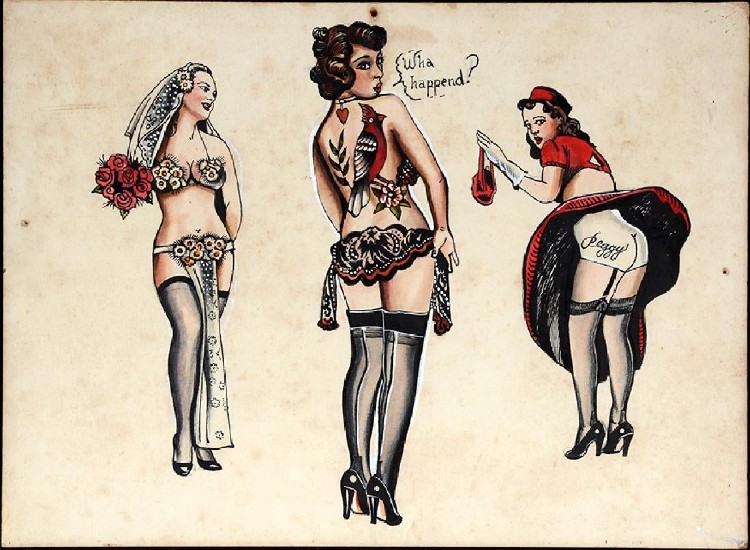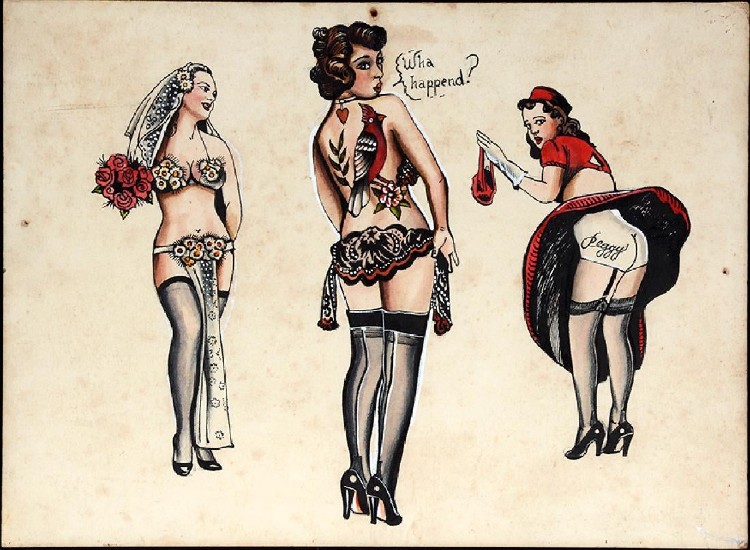
NEW YORK – Tattoos were once decried, relegated to sailors and military personnel, sideshow performers or society’s fringe, with tattoo parlors tucked away in alleys. Tattooing was even banned for several decades in New York City over the fear of customers contracting hepatitis.
Tattoos are now mainstream and accepted by all walks of life from soccer moms to Fortune 500 businessmen. They are even the subject of museum exhibitions. Highly collectible today is vintage flash art (displays of a tattooist’s designs). Tattoo flash sheets were designed to be eye-catching and their use began in the late 1800s, particularly at circuses and carnivals where tattoo artists would use them to call attention to their work and bring in customers. Artists would make line drawings of their appealing tattoo designs such as scantily clad women, eagles, the American flag and anchors. Popular themes historically have included military and patriotic symbolism, women’s bodies, religious iconography, as well as daggers, flowers, hearts and animals. Artists hand-drew or painted their designs on boards to hang in their shops or placed sheets in binders.
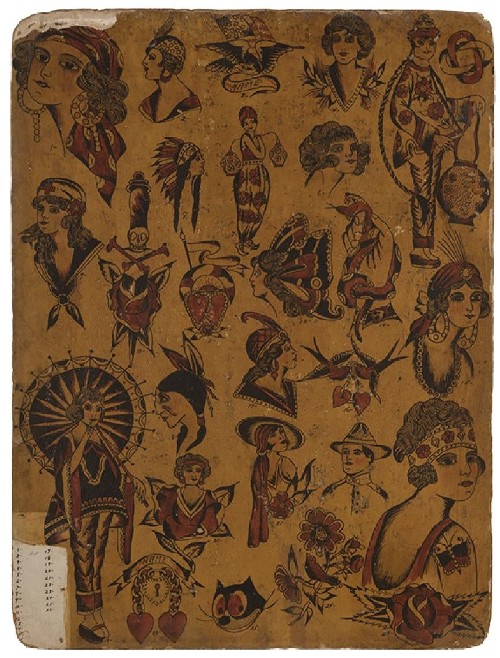
While there is mythology claiming the origins of tattoos date to Captain Cook’s South Pacific voyage, the art of tattooing goes back to ancient times and has been a constant in Western society for centuries.
The first electric tattoo machine was patented in 1891 by Samuel O’Reilly, a New York City tattooist. He based its design on Thomas Edison’s stencil pen. The instrument revolutionized tattooing. Until then, artists had to prick tattoos by hand or with nonelectric tools. The device instantly made tattooing fast, affordable and widely available. “In the United States during the early 1900s there were only a small handful of tattoo suppliers [mostly tattooers],” according to the Motor City Tattoo Museum. The museum website notes that by the 1940s and ’50s, World War II servicemen and the circus sideshow popularized tattooing, which inspired an influx of new tattoo artists all around the country.

“The appetite for tattoo-related collectibles – not just flash – is on the rise,” said Gabe Fajuri, co-founder of Potter & Potter Auctions in Chicago. “We’ve seen great results for tattoo-related postcards, photographs and other ephemera. But flash of a certain ‘golden’ vintage is a category apart from these other ephemeral things. Work created for display by well-known artists has never been in greater demand.”
Vintage flash art has been bringing robust prices in recent years such as Ripley Auctions’ July 2018 sale, which sold six antique tattoo flash art sheets, some dating back to 1894, for $41,375. They were attributed to renowned New York City tattoo artists Charlie Wagner, the best-known of the Bowery tattooists, and Sam O’Reilly, aka The Tattoo Man.
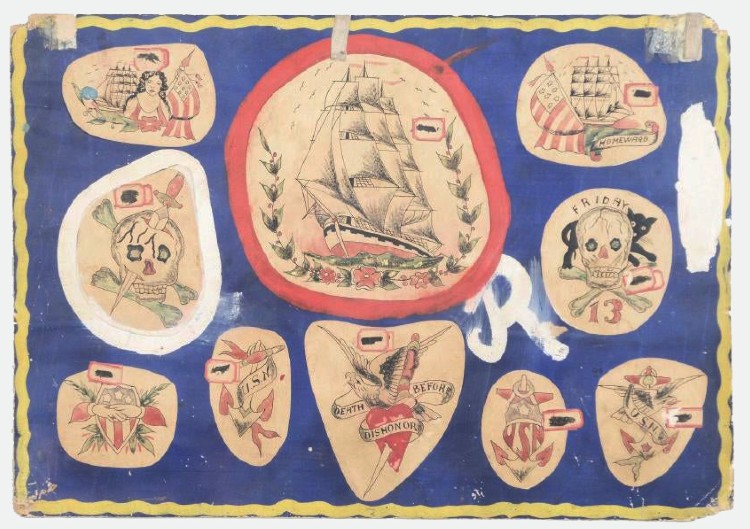
Erik Hoyer, owner of EJ’s Auction & Consignment in Glendale, Ariz., wrote a blog in the summer of 2017 about the collectibility of flash art. “While popular during World Wars I and II, tattoos started getting a bad rap. By 1961, New York City made it illegal to give someone a tattoo, and that ban was not lifted until 1997,” he wrote. Today, shows like Ink Master and LA Ink have helped mainstream and promote this art form and there are even tattoo conventions. In 2019, the world’s first tattoo history convention took place in Winston-Salem, N.C., as documented in this article.
Hoyer offered tips for new collectors, including researching and becoming familiar with the styles of renowned tattoo artists like “Sailor Jerry” Norman Collins, who was famous for his “Aloha” animals. He also advises that people should study the medium used when looking at flash art described as vintage. “Vintage tattoo flash art from the 1940s and 1950s was either hand-drawn with a pen or painted with watercolor and acrylics. The felt tip pen wasn’t invented until the mid-1960s, so keep that in mind when examining the art,” he said.
Designed to be heavily used, many examples of flash art were discarded over the years. “They were of little value at the time and the majority of these were thrown out, making surviving boards extremely rare, even more so for the large scale tattoos,” according to Morphy Auctions in Denver, Pa., which has sold several examples in recent years such as this one.
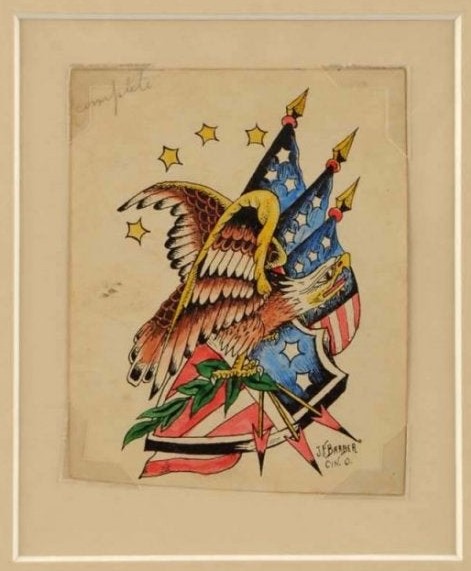
Further proving the value that flash art now has, several renowned museums have mounted exhibitions. In July 2013, the Milwaukee Art Museum presented its first tattoo art exhibition, “Tattoo: Flash Art of Amund Dietzel.” Learning how to tattoo as a sailor, Dietzel went on to be a premier artist, touring the country with carnivals before settling in Milwaukee, where he was dubbed the “Master in Milwaukee.” The New-York Historical Society featured “Tattooed New York” in 2017 that looked at 300 years of tattooing in New York, including the integral part the city had in modern tattooing and spreading the art form to other parts of the world.
Vintage flash art sheds much light on a centuries-old art form that people use for both self-expression and empowerment. While most tattoos today are custom, flash art is sacred in the history of tattooing, revealing the evolution of styles over time.


